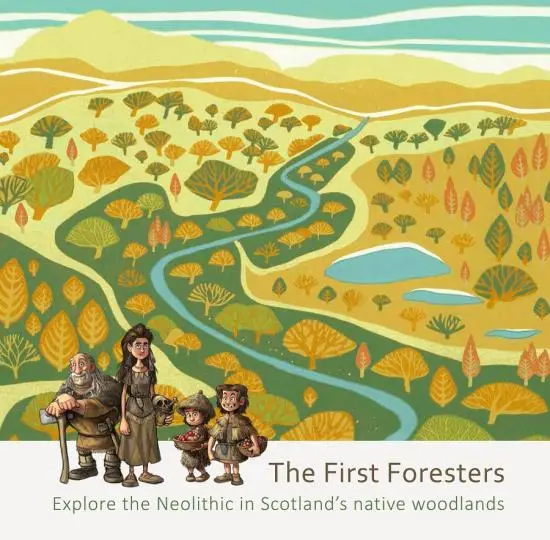Behind the Scenes: Creating 'The First Foresters'

Created in partnership with Archaeology Scotland, it will be of interest to teachers, youth group leaders, archaeological educators and anyone interested in our native woodlands. In this week's blog post, archaeologist Matt Ritchie takes you behind the scenes of its creation, and introduces you to the ecologists, archaeologists, educators, artists and photographers who helped us put it all together.
We first asked photographer John MacPherson (pictured above) to visit some of the best examples of today’s native woodland to illustrate the wildwood of the past. We wanted him to evoke our different human responses to woodland, seeing them as open, light and safe places with green, vibrant and alive trees living within. But woodland can also be deep, dark and scary, with dead, fallen and rotting trees. From huge and ancient trees, through dry standing deadwood, to tiny delicate saplings, John captured the life cycle of our native woodlands and explored our emotional responses.
John took the natural themes of life and growth – and death and decay – and interwove them with inferences of drama and movement, ritual and magic, and of immersion and the woodland edge. John’s photography helps to link today’s woodland environment with our evocation of ancient Neolithic life. Throughout the resource, the Neolithic woodland environment is variously described as a wildwood (to be tamed or feared), a timber resource (to be used or controlled), a place of ancient mystery (to be worshipped and respected) and a familiar natural world (in which to live, hunt and gather).
To populate our Neolithic wildwood and imagine its new structures, we turned to archaeological reconstruction artists Alan Braby, Alex Leonard and Alice Watterson. We wanted to explore Neolithic imaginatively, using narrative characterisation rooted in archaeological knowledge. Their characters and illustrations support creative writing tasks where children must put their own imaginations to the test.
Archaeologist Kim Biddulph guided artist Alex Leonard in the illustration of our Neolithic tribe, using lots of archaeological evidence to help. For example, old Tanta’s most treasured possession is a ‘greenstone axehead’ of Alpine Jadeite (one of the most iconic of European Neolithic artefacts), and several of our characters wear or carry items from the equipment of the most famous Neolithic character of all, Ötzi the Iceman. Our lead character, Winta, carries a knife and sheath based on his kit (linking to the evidence) and a skull in a basket (linking to the narrative).
'The First Foresters' gives the practitioner the background information to explore our deep past in their own way, and to ask today’s children how they see the forests and woods of Scotland.